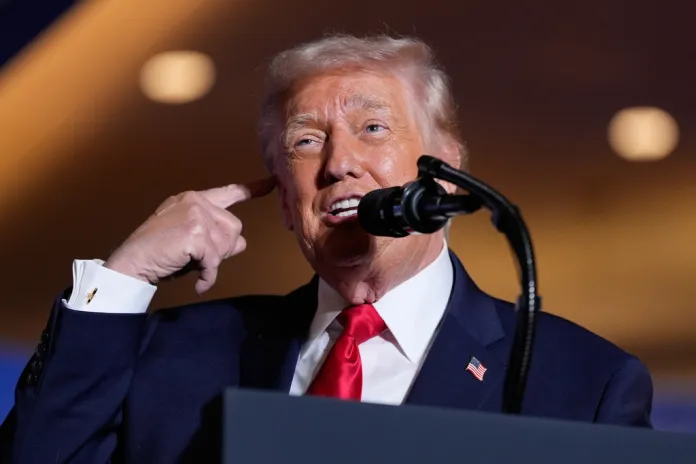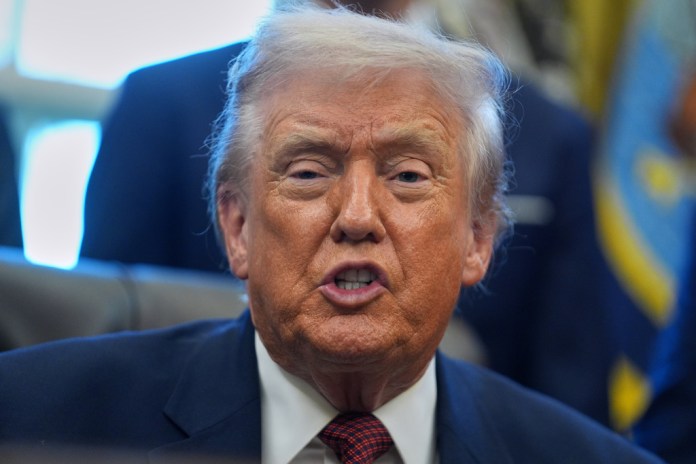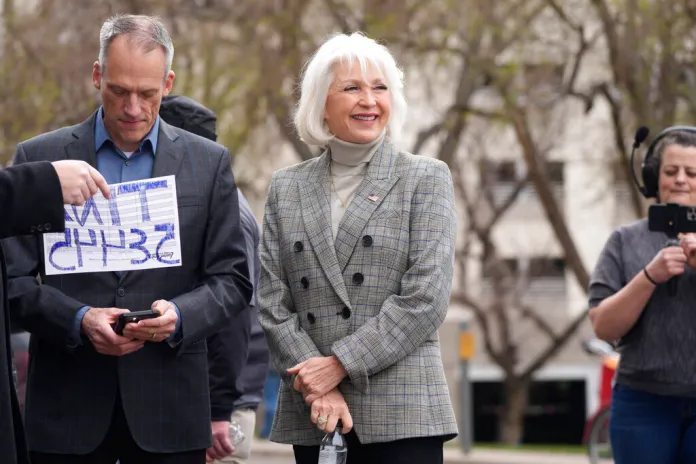Trump-Putin call dashes Zelensky’s hopes of receiving Tomahawks
The article discusses the diplomatic developments surrounding Ukraine’s request for long-range Tomahawk missiles from the United States amid its ongoing conflict with Russia. Ukrainian President Volodymyr Zelensky hoped to secure these weapons during his meeting with U.S. President Donald Trump at the White House. However, Zelensky’s chances diminished after trump’s lengthy phone call with Russian President Vladimir Putin, during which trump indicated Putin strongly opposed the idea. Trump announced plans for a possible meeting with Putin in Hungary to discuss ending the war and emphasized the need to avoid depleting U.S. Tomahawk missile stockpiles.
Despite zelensky’s efforts and the strategic importance of strengthening Ukraine’s air defenses, energy sectors, and sanctions regime against Russia, experts expressed skepticism about Trump’s willingness to provide significant military aid. Analysts suggested that while Tomahawks could boost ukrainian morale, their limited numbers might not lead to a decisive strategic advantage. The article also highlights ongoing negotiations on drone technology sharing between the U.S. and Ukraine and notes political challenges in the U.S. Congress related to additional sanctions on Russia.
the piece portrays a complex diplomatic scene where U.S.-Russia talks perhaps sideline ukraine’s military ambitions, with strategic calculations and geopolitical considerations shaping the unfolding situation.
Trump-Putin call dashes Zelensky’s hopes of Tomahawks from the US
Ukrainian President Volodymyr Zelensky hoped to press President Donald Trump during their meeting on Friday at the White House on helping Ukraine take the war to Russia.
But Zelensky’s chances of convincing Trump to provide Ukraine with long-range Tomahawk missiles that can reach 1,000 miles into Russia appear to have dissipated on Thursday after Trump’s phone call with Russian President Vladimir Putin.
Trump’s two-hour call with Putin on Thursday concluded with Trump announcing a possible second meeting between him and his Russian counterpart in Budapest, Hungary, in the next two weeks to explore whether the pair “can bring this ‘inglorious’ War” to an end.
That meeting depends on a separate sit-down next week between what Trump described as “high-level” United States and Russian officials, including Secretary of State Marco Rubio.
But even the prospect of a meeting between Trump and Putin is similar to the impetus behind the pair’s sit-down in August in Alaska, prompted by Trump considering imposing secondary sanctions on the likes of China and India for their purchase of Russian oil and supporting supplementary legislation proposed by Sen. Lindsey Graham (R-SC).
Trump later imposed sanctions on India as part of a more encompassing pressure campaign against Indian Prime Minister Narendra Modi amid their trade dispute.
TRUMP AND PUTIN AGREE TO MEET IN HUNGARY TO END ‘INGLORIOUS’ WAR IN UKRAINE
“The odds have gone down indeed,” of the likelihood that Trump will provide Ukraine with Tomahawks, according to American Enterprise Institute senior fellow Dalibor Rohac.
“It’s not just Russia’s tactics,” Rohac told the Washington Examiner. “I suspect Trump was never terribly keen to help, and this latest round of diplomatic outreach, which I don’t think will lead anywhere, is an opportunity to kick the can down the road in a way that we’ve seen so many times before.”
Zelensky’s request for Tomahawks comes after Trump surprised many with his Truth Social post last month during the United Nations General Assembly, in which he expressed confidence in Ukraine “to fight and WIN all of Ukraine back in its original form.”
Though many welcomed Trump’s post, White House sources at the time downplayed it as part of Trump’s negotiating strategy with Russia.
The same strategy appeared to be on display on Thursday when Trump similarly announced on social media he was participating in a “lengthy” phone call with Putin before his meeting on Friday with Zelensky.
The day prior, Trump told reporters at the White House that he and Zelensky would “talk about the war” on Friday.
“They want to go on the offensive,” he said Wednesday. “I will make a decision on this matter, but they really want to go on the offensive, and we will have to make a decision about it.”
On Thursday, Trump, speaking again from the Oval Office, said he spoke with Putin about providing Ukraine with Tomahawks and that Putin “really didn’t like the idea.”
“We need Tomahawks for the United States of America, too,” he said. “We have a lot of them, but we need them. I mean, we can’t deplete our country.”
Regardless, Ukrainian Ambassador to the U.S. Olga Stefanishyna underscored the importance of Friday’s meeting for Ukraine and Zelensky.
“Moments after the successful implementation of a peace plan for Gaza, embodied through the exceptional leadership and determination of the U.S. 47th president, we are not slowing down,” Stefanishyna told reporters this week. “Rather, we are preparing a background that will reveal the potential for a global political surge to end the war as laid out by the presidents, through strength.”
For Stefanishyna, the most pressing agenda items for Friday’s meeting include strengthening Ukraine’s air defenses, long-range capabilities, and energy sector, in addition to sanctions on Russia.
“As we have seen time and again, direct communication between our presidents has yielded the clearest mutual understanding — and Ukraine remains fully committed to this format,” she said.
Stefanishyna also emphasized the importance of the meeting for negotiations regarding a drone technology-sharing agreement between the U.S. and Ukraine to complement the critical minerals deal from earlier this year after Trump and Zelensky’s tense first White House meeting in February.
Stefanishyna, too, previewed new weapons for Ukraine through the North Atlantic Treaty Organization’s Prioritized Ukraine Requirements List program, which was announced by Trump and NATO Secretary General Mark Rutte in July.
Irrespective of Trump’s meeting with Putin, AEI’s Dalibor Rohac contended the U.S. ought to provide Ukraine with Tomahawks, “alongside the infrastructure, support, and intelligence needed to use them effectively.”
“It should have gotten them much earlier – and ideally without the usual protracted, agonizing discussions in Washington, which only give Putin the time to adjust,” Rohac said.
Rohac argued that the difference the Tomahawks could make in the war “is a function of the numbers.”
“If only a small number of Tomahawks make it to Ukraine, which seems likely, they will provide a morale booster for the Ukrainian Armed Forces but, in isolation, probably won’t be a driver of major strategic breakthroughs,” he said.
Brookings Institution’s O’Hanlon agreed that Tomahawks “are unlikely to be a game-changer.”
“Russia is already getting hit by drones and has already lost hundreds of thousands as casualties near the front lines,” he said. “Plus, truly crucial supplies can be dispersed, hidden, etc.”
For O’Hanlon, there is the possibility that Tomahawks could “inflict a type of pain that Russia hasn’t seen before that causes Putin finally to reassess just how much he is willing to keep fighting for incremental gains in territory.”
“The odds are against such a development, but it’s not out of the question,” he said. “Of course, there is also the danger of escalation by Russia to weigh as part of the equation, too.”
Center for Strategic & International Studies Missile Defense Project director Tom Karako was more confident regarding Ukraine’s use of Tomahawks: “Ukraine has long requested long-range standoff capability to help turn the tide, and this is the sort of thing that could help them do so.”
Meanwhile, Graham’s sanctions legislation appears to have stalled in Congress, with a White House official telling the Washington Examiner, “any sanction package must provide complete flexibility for the president to continue to pursue his desired foreign policy.”
TRUMP MAKES ARGENTINE $20 BILLION CURRENCY SWAP CONTINGENT ON MILEI WIN
In an interview, Graham told the Washington Examiner he has given Trump “a lot of deference” regarding the legislation.
“He’s the quarterback under the bill, he sets the tariffs,” the senator said. “He can change them based on his discretion. But Europe hasn’t embraced the idea of hitting Russia’s customers. You know, Trump’s got a 25% tariff on India. I think Trump will go hard on China, but Europe needs to go too. So the European position, ‘We’re not going to use secondary tariffs,’ is unsustainable if you want to keep Trump on board.”
" Conservative News Daily does not always share or support the views and opinions expressed here; they are just those of the writer."




